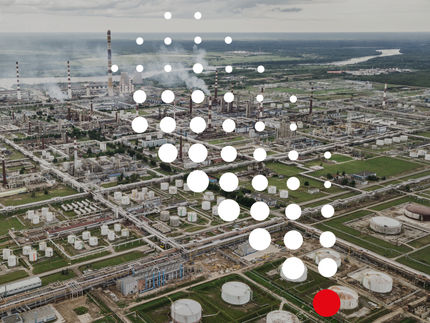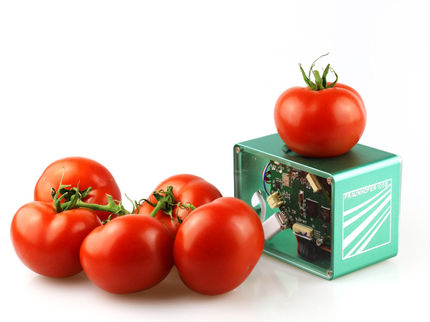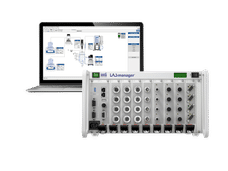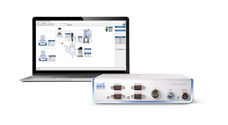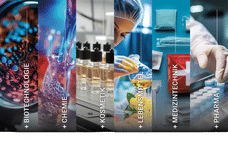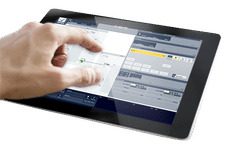User's Scepticism toward New Technologies Remains a Key Challenge for Automation Software Vendors
automation software vendors in Europe face a challenging task ahead as they try to convince end users across various industries to replace legacy programmable logic controllers (PLCs) with the more sophisticated software-based systems such as human machine interface (HMI) and supervisory control and data acquisition (SCADA).
The emergence of the Internet into the manufacturing floor makes the plant data more vulnerable to security attacks. Apart from security concerns, users are sceptical regarding hardware dependability and the stability of the underlying operating system, especially for running mission-critical applications.
Since industrial users are unwilling to risk their production pipeline on software-based systems, automation software vendors need to offer SCADA and HMI software packages that come with embedded security tools.
"Given that new technologies, such as Web services and mobile devices for monitoring and controlling processes, are yet to gather pace, automation vendors should concentrate on educating users on these technologies emphasising on the benefits they could offer in terms of better return on investment, improved resource efficiency and higher throughput," asserts Technical Insights Research Analyst Amreetha Vijayakumar.
Vendors could also stress on the capabilities of the latest SCADA and HMI software packages that besides providing some advanced diagnostic capabilities allow remote monitoring of manufacturing facilities.
Embedded state-of-the-art sensors, advanced vision systems and other supervisory systems send appropriate alarms to the engineers through short messaging service (SMS) to the mobile phone or personal digital assistant.
"Here, vendors need to emphasise the value of collecting, acquiring, presenting and analysing the data, which is crucial for monitoring quality and fixed costs in a manufacturing organisation," says Ms. Vijayakumar.
Moreover, SCADA systems are providing data on a real-time basis using technologies such as eXtensible markup language (XML), simple object access protocol (SOAP), wireless mark-up language (WML) and extensible stylesheet language (XSL) that keep production downtime to a minimum.
Powerful languages such as C++, VC++ and Visual Basic are also available, which help in developing complex motion applications and simplify the transition from legacy systems to the latest automation software packages.
"The application logic is provided as a separate layer from the software implementation layer, which makes the system versatile and suitable for different application environments," explains Ms. Vijayakumar.
There has also been significant advancement in the HMI hardware systems area to better suit the industrial segment. For example, 3M Touch Systems has launched its latest product in the touch screen genre, which performs well even in rugged manufacturing environments, and is now exploring the use of sound and speech technologies as a part of the HMI systems.
Automation software vendors are also integrating SCADA systems with higher-level management systems such as manufacturing execution systems (MES) and enterprise resource planning (ERP) for improved business planning and decision-making.
In the long term, compliance laws are expected to be the most significant driving factor for automation software, compelling manufacturers, especially in the pharmaceutical sector, food & beverages and automotive industry to set up HMI/SCADA systems.
Advances in Automation Software in Europe is part of the Industrial Automation vertical subscription service, and the latest and upcoming trends in the European market for automation software. In addition to discussing the various technology drivers and restraints, the study covers research and development efforts at various universities, leading companies and other research institutions across the globe. If you are interested in an analysis which provides manufacturers, end users, and other industry participants with an overview, summary, challenges, and latest coverage of Advances in Automation Software in Europe - then send an e-mail to Magdalena Oberland using the 'Contact' button below.
Other news from the department business & finance
These products might interest you
Most read news
More news from our other portals
See the theme worlds for related content
Topic world Sensor technology
Sensor technology has revolutionized the chemical industry by providing accurate, timely and reliable data across a wide range of processes. From monitoring critical parameters in production lines to early detection of potential malfunctions or hazards, sensors are the silent sentinels that ensure quality, efficiency and safety.

Topic world Sensor technology
Sensor technology has revolutionized the chemical industry by providing accurate, timely and reliable data across a wide range of processes. From monitoring critical parameters in production lines to early detection of potential malfunctions or hazards, sensors are the silent sentinels that ensure quality, efficiency and safety.
